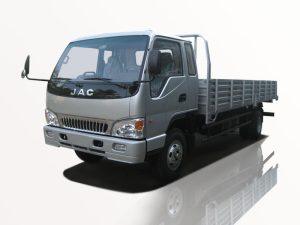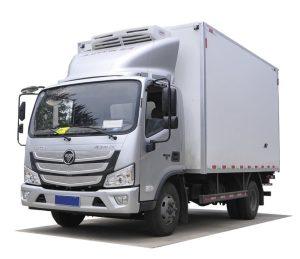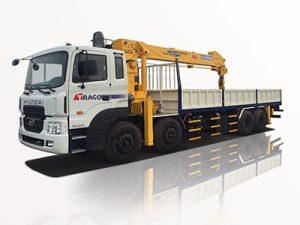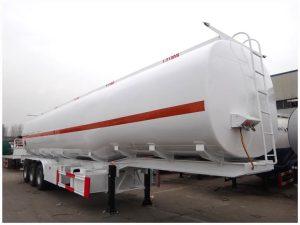Monday to Saturday - 8:00 -17:30
Understanding Engine Retarder Brakes: Enhancing Vehicle Safety and Control
Engine retarder brakes, often referred to as Jake brakes or compression release brakes, are vital components in heavy-duty vehicles. They provide additional braking power that helps truck and bus drivers maintain control and reduce wear on traditional braking systems. This article delves deep into the mechanics, benefits, applications, and considerations of engine retarder brakes, giving you a comprehensive understanding of this key technology.
What Are Engine Retarder Brakes?
Engine retarder brakes are a type of auxiliary braking system that utilizes the engine’s compression cycle to slow down a vehicle. Unlike traditional brakes that rely solely on friction, engine retarders take advantage of the engine’s mechanical properties, allowing for more efficient deceleration, especially during long downhill drives.
How Engine Retarder Brakes Work
The Mechanics Behind Engine Retarder Brakes
When the driver activates an engine retarder, the engine valves are manipulated to release compressed air from the cylinders, effectively turning the engine into a brake. This process creates a significant amount of resistance, slowing down the vehicle without putting excess strain on the traditional braking system.
Types of Engine Retarder Brakes
There are several types of engine retarder brakes, including:
- Compression Release Brakes (Jake Brakes): The most common type, using the engine’s compression to slow the vehicle.
- Exhaust Brakes: These restrict the exhaust flow, increasing back pressure and aiding in deceleration.
- Dual Mode Engine Brakes: Combines both compression release and exhaust braking for enhanced performance.
Benefits of Engine Retarder Brakes
Improved Vehicle Control
Engine retarder brakes provide improved control during deceleration, particularly in heavy vehicles. This control is crucial when navigating steep gradients, where relying solely on standard brakes can lead to overheating and potential brake failure.
Extended Brake Life
Since engine retarder brakes reduce the reliance on traditional brakes, they contribute to an extended lifespan of brake components. This reduction in wear and tear translates to lower maintenance costs over time.
Enhanced Safety
Utilizing engine retarder brakes enhances vehicle stability, especially in adverse weather conditions. They help prevent skidding and loss of control, making them essential for truck drivers who often navigate challenging terrains.
Applications of Engine Retarder Brakes
Heavy-Duty Trucks
The most common use of engine retarder brakes is in heavy-duty trucks. These vehicles benefit significantly from the additional braking power, especially when carrying heavy loads on long downhill stretches.
Bus Systems
Buses equipped with engine retarders can manage deceleration better, ensuring passenger safety and comfort, especially in hilly regions.
Construction Equipment
Construction vehicles, such as dump trucks and excavators, often use engine retarders to enhance control when transporting heavy materials on uneven terrain.
Choosing the Right Engine Retarder Brake
Factors to Consider
| Factor | Description |
|---|---|
| Vehicle Weight | Heavier vehicles will benefit more from stronger retarder options. |
| Driving Conditions | Consider routes frequently traveled—steep climbs or descents may require more robust systems. |
| Cost vs. Benefit | Evaluate the long-term savings in brake maintenance against the initial investment. |
Practical Tips for Using Engine Retarder Brakes
- Learn the range of your retarder: Understand how to use it effectively across different speed ranges.
- Practice with varying loads: Test the retarder under different weight conditions to understand its performance.
- Combine with standard brakes: Use both retarder and standard brakes for optimal performance, especially in emergencies.
- Regular maintenance: Ensure the braking system, including the engine retarder, is serviced regularly for safety.
Common Misconceptions About Engine Retarder Brakes
Noise Concerns
Many people associate engine retarder brakes with excessive noise. While it’s true that Jake brakes can be loud, this is often mitigated by local regulations and improvements in technology.
Only for Heavy Vehicles
While primarily found in trucks and buses, engine retarders can be effective in other vehicles, including some larger recreational vehicles (RVs) and specialized SUVs designed for rugged terrains.
Engine Retarder Brake Maintenance
Regular Inspection
To ensure optimal performance, regular inspections of the engine retarder system are necessary. Look for signs of wear or malfunction that might affect its functionality.
Proper Adjustment
Make sure that the system is properly adjusted to ensure that the engine brake engages and operates effectively when needed.
Future of Engine Retarder Brakes
Technological Advancements
As vehicle technology advances, engine retarder brakes are likely to evolve as well. Innovations may include improved efficiency, reduced noise emissions, and greater integration with vehicle stability systems.
Frequently Asked Questions (FAQs)
What is the primary function of engine retarder brakes?
The primary function of engine retarder brakes is to provide additional braking power by utilizing the engine’s compression cycle, which helps in decelerating heavy vehicles more efficiently and safely.
Can engine retarder brakes be used in all vehicles?
While engine retarder brakes are most beneficial for heavy-duty vehicles, some larger recreational vehicles and specialized vehicles may also be equipped with them for improved braking performance.
Are there any downsides to using engine retarder brakes?
Potential downsides include increased noise levels and the need for regular maintenance. Additionally, in some regions, the use of Jake brakes may be restricted due to noise ordinances.
How often should engine retarder brakes be serviced?
Regular inspections and servicing should be conducted according to the manufacturer’s recommendations, typically aligning with routine vehicle maintenance schedules.
Do engine retarder brakes work on automatic transmission vehicles?
Yes, many modern engine retarder brakes are designed to work seamlessly with automatic transmission systems, providing effective braking performance without manual intervention.
What is the difference between engine retarder brakes and exhaust brakes?
Engine retarder brakes primarily use the engine’s compression cycle to slow the vehicle, while exhaust brakes restrict exhaust flow, increasing back pressure in the system to aid in deceleration.









